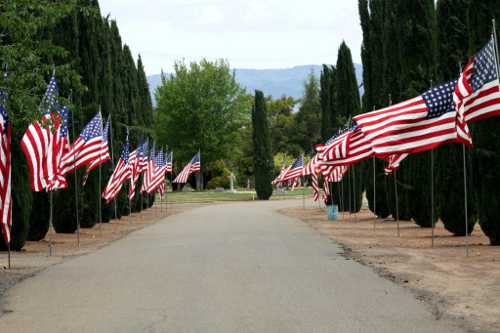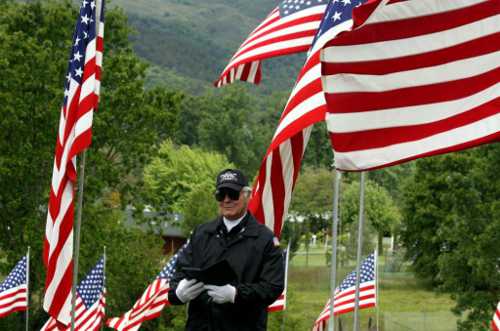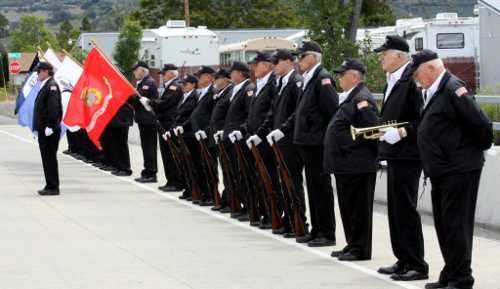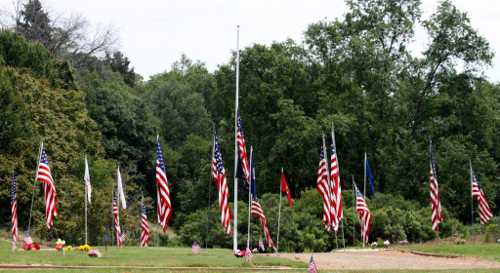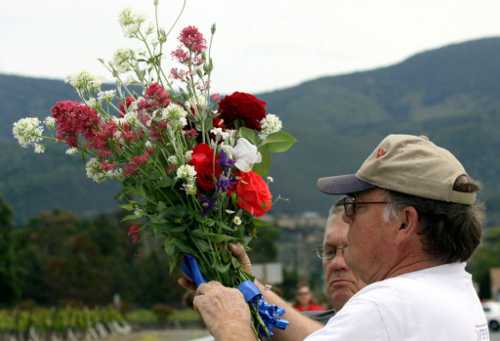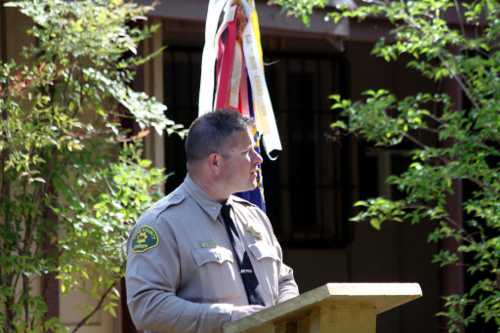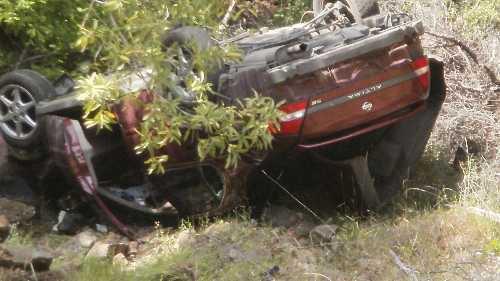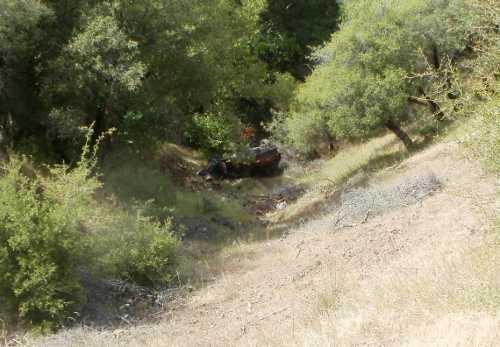
Peppermint fresh from the garden. Photo by Esther Oertel.
I visited a Kelseyville home yesterday to give vegetarian cooking lessons and left with a generous helping of fresh herbs from the garden there, a fragrant combination of peppermint, flowering thyme, oregano and sage.
The cab of my little truck smelled heavenly as I plied my way home.
The generosity of this client, as well as the rapidly spreading potted spearmint on my deck, provided the seed of inspiration for today’s mint musings. A steaming mug of fresh peppermint tea made from today’s bounty is proving to be fine fertilizer.
(Technically, an herbal infusion such as the one I’m enjoying should be referred to as a tisane, but the word tea is so delightfully comforting.)
Mint is popular in a wide swath of cuisines around the world, from Europe to Africa to Asia to the Americas.
More than 20 years ago I had my first Moroccan restaurant experience, complete with low tables, floor cushions for seating, hot lemony washcloths and communal eating from one bowl sans utensils (providing the reason for the washcloths).
All of this was interesting, but I was mesmerized by the tea ritual that took place at the beginning of each meal. Experienced wait staff poured hot, sweet minty tea from a great height into waiting cups below. Not once did I see an errant drop from those tall, silver urns splatter awry.
In Morocco, mint tea is an icon for hospitality and such a ritual is essential for welcoming a guest into one’s home. If you’d like to make mint tea Moroccan style at home, instructions for this are included below with my regular recipe offering for the week.
As to my simple peppermint tisane, simply pour hot water over a tablespoon or so of fresh peppermint leaves in a mug.
Mint cools us down from the inside out, and imbibing beverages containing this herb helps when the weather is hot; hence the popularity of mint tea in Morocco.
An alcohol-free Mojito-style cooler may be made by muddling mint with a bit of sugar in the bottom of a glass before adding fresh lime juice and sparkling water. Ice and a good stir are all that’s needed before enjoying.
Mint is a delightful addition to another citrus cooler, lemonade. Allow fresh sprigs to infuse in the pitcher, or add a sprig to individual glasses.
Water infused with mint is wonderfully refreshing. Simply add mint sprigs to a pitcher of water and allow it to cool in the fridge for an hour or so. The longer it infuses, the stronger the flavor. The mint may be lightly “spanked” prior to adding to the water, meaning it’s hit against the palm of the hand to release its essential oils.
If desired, peeled, seeded cucumber spears may be added to the water. Not only is this is a delightful flavor combination, but cucumber heightens the cooling effect of the beverage.
The combination of mint, yogurt and cucumber, three cooling foods, is found in the cuisines of a variety of hot countries, such as those in the Middle East, North Africa and India.

A chiffonade of fresh mint for flavoring foods may be made by layering mint leaves, rolling them cigar style and slicing them thin. Photo by Esther Oertel.
In addition, mint is a main ingredient in salads of these lands, such as tabbouleh of the Middle East, a favorite salad of mine and a fresh companion of another favorite, hummus.
To make tabbouleh, fresh vegetables such as cucumber, scallions and tomato are added to bulgur wheat along with generous helpings of chopped parsley and mint. Olive oil and fresh squeezed lemon juice complete the mixture.
Its fresh herbal taste and crunchy texture provide a nice contrast to the smooth creaminess of hummus and they’re perfect together in a pita.
In addition to cucumbers, mint is paired with vegetables as diverse as carrots, peas, potatoes, beets and beans. Fruits such as melons, strawberries and raspberries benefit from the addition of mint.
I add fresh mint to peas, flavor cooked carrots with mint and honey, toss sliced beets with mint and orange zest, and making a soup of fresh peas and mint is on my culinary to-do list.
Mint is a flavor component in the cuisines of Southeast Asia, such as that of Thailand and Vietnam. Along with Thai basil and cilantro, mint flavors the fresh spring rolls of those countries. I love how the strong herbal tastes of the three herbs work together to excite and refresh the palate.
There are over 30 species of mint, with spearmint and peppermint being the most popular and accessible. Fresh spearmint has a milder flavor than the stronger, more pungent peppermint.
Like other herbs (thyme and basil, for example), some mints have overtones of other flavors, such as chocolate, cinnamon, pineapple and bergamot mints.
It is generally accepted that if the mint variety isn’t noted in a recipe, spearmint should be used.
This hardy Mediterranean herb holds a place in Greek mythology, where it’s said that mint was once the nymph Mentha. She angered Pluto’s wife Persephone, who turned her into this aromatic plant. While Pluto couldn’t undo Persephone’s spell, he softened it a little so that the more Mentha was tread upon, the sweeter her smell would be.
Mint, which is rich in vitamins A and C, is a popular home remedy for ailments ranging from abdominal and digestive problems to headaches and fevers to insomnia, toothaches and bad breath.
It also contains a wide array of essential minerals, such as manganese, copper, iron, potassium and calcium.
Today’s recipe is a favorite hot weather salad, Tzatziki (pronounced tah-zee-kee), combining yogurt, cucumber and mint.
Tzatziki hails from Greece, where such cooling food is welcome in the bright sunshine of that country.
Other versions of tzatziki are flavored with fresh thyme or dill, and either of these herbs may be added along with the mint, if desired. Enjoy!
Tzatziki: Greek cucumber yogurt salad
2 medium cucumbers (English or Armenian preferred), peeled*, seeded and thinly sliced
2 cups plain Greek yogurt
2 cloves garlic, smashed, then finely diced
Juice of half a lemon (or more to taste)
Fresh mint, large handful, chopped
Fresh dill or thyme to taste, chopped, optional
Freshly ground black pepper & salt to taste
*If using English, Armenian or other thin-skinned cucumbers, peeling and seeding is unnecessary.
Combine the yogurt, garlic and lemon juice in a bowl.
Add cucumber to yogurt mixture and combine well.
Add mint, using more or less depending upon taste; blend.
Add dill or thyme, if using, and add salt and pepper to taste.
Adjust lemon juice and seasonings, if needed.
Note: Greek yogurt is thicker than other yogurts and if unavailable, use regular plain yogurt drained in the fridge for 8 hours or overnight. To do this, line a colander with cheesecloth or paper towels, add yogurt, then place colander over bowl for drainage. This method creates a thick Greek-like yogurt. (The volume reduces with this method; two cups of yogurt become one after draining.)
Recipe by Esther Oertel.
Moroccan mint tea
2 teaspoons of gunpowder tea
1 bunch of fresh mint
2 tablespoons of sugar
Boil a kettle of water. Put the tea in a teapot. Pour a little bit of boiled water from the kettle into the teapot. Swirl it around with the tea to wash the tea. Pour out the water. Then fill the teapot with boiled water. Put the teapot back on the stove on a low flame, until the tea starts to simmer. Watch it closely so that it doesn’t boil over! Take the teapot off the stove and add the mint and sugar. Moroccans tend to take their tea very sweet, but you may choose to add less sugar.
Recipe courtesy of Moroccan cooking site www.fescooking.com
Esther Oertel, the “Veggie Girl,” is a culinary coach and educator and is passionate about local produce. Oertel teaches culinary classes at Chic Le Chef in Hidden Valley Lake, Calif., and The Kitchen Gallery in Lakeport, Calif., and gives private cooking lessons. She welcomes your questions and comments; e-mail her at This email address is being protected from spambots. You need JavaScript enabled to view it..
Follow Lake County News on Twitter at http://twitter.com/LakeCoNews , on Facebook at http://www.facebook.com/pages/Lake-County-News/143156775604?ref=mf , on Tumblr at http://lakeconews.tumblr.com/ and on YouTube at http://www.youtube.com/user/LakeCoNews .

This pot of fresh spearmint is part of a small backyard herb garden. Photo by Esther Oertel.

 How to resolve AdBlock issue?
How to resolve AdBlock issue? 


